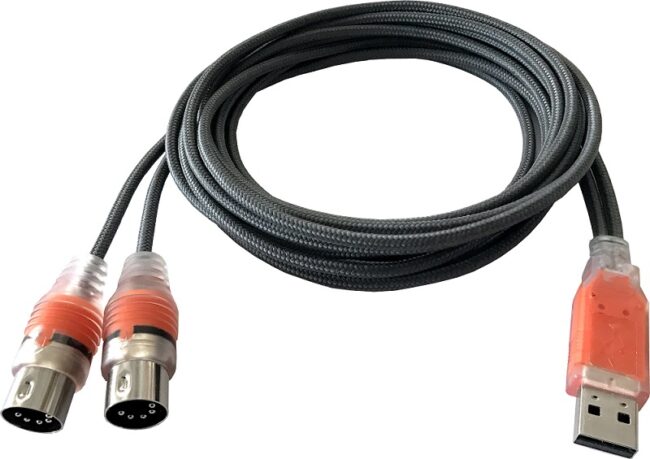Modern interfaces are adopting USB for MIDI connections—but here’s how to use older, 5-pin DIN MIDI gear
In a probably not unexpected trend, fewer audio interfaces are including the five-pin DIN connectors that were part of the original MIDI protocol (your trivia for today: DIN stands for Deutsche Institut für Normung, a German standards organization). These transfer data into the computer via the MIDI in, and transmit computer data to a MIDI-savvy sound generator or other MIDI gear via the MIDI output.
These days, it’s more likely that MIDI data will be carried over USB, so many newer MIDI devices connect to computers with USB rather than 5-pin DIN-compatible cables. Fortunately some controllers have both options, but the handwriting’s on the wall: MIDI’s future is not 5-pin DIN connectors.
But MIDI’s past is, and fortunately, the MIDI spec has always paid attention to making sure older MIDI gear doesn’t become obsolete. If your audio interface doesn’t have 5-pin DIN connectors but you need them, it’s not a problem. MIDI interfaces are available that connect with a computer’s USB port and provide MIDI in and out with 5-pin DIN connectors. Some of these interfaces are simply cables, which makes them very convenient if you have an instrument or two that you need to connect to your computer via USB.
The photo shows ESI’s MIDIMATE eX, which provides DIN-to-USB and USB-to-DIN conversion. What impresses me the most about this particular converter is being able to take the output from an Ensoniq TS-10 with polyphonic aftertouch, turn off local control, echo the data through the computer, and feed it back to the TS-10’s sound generators—without any loss of data. Pretty cool.
